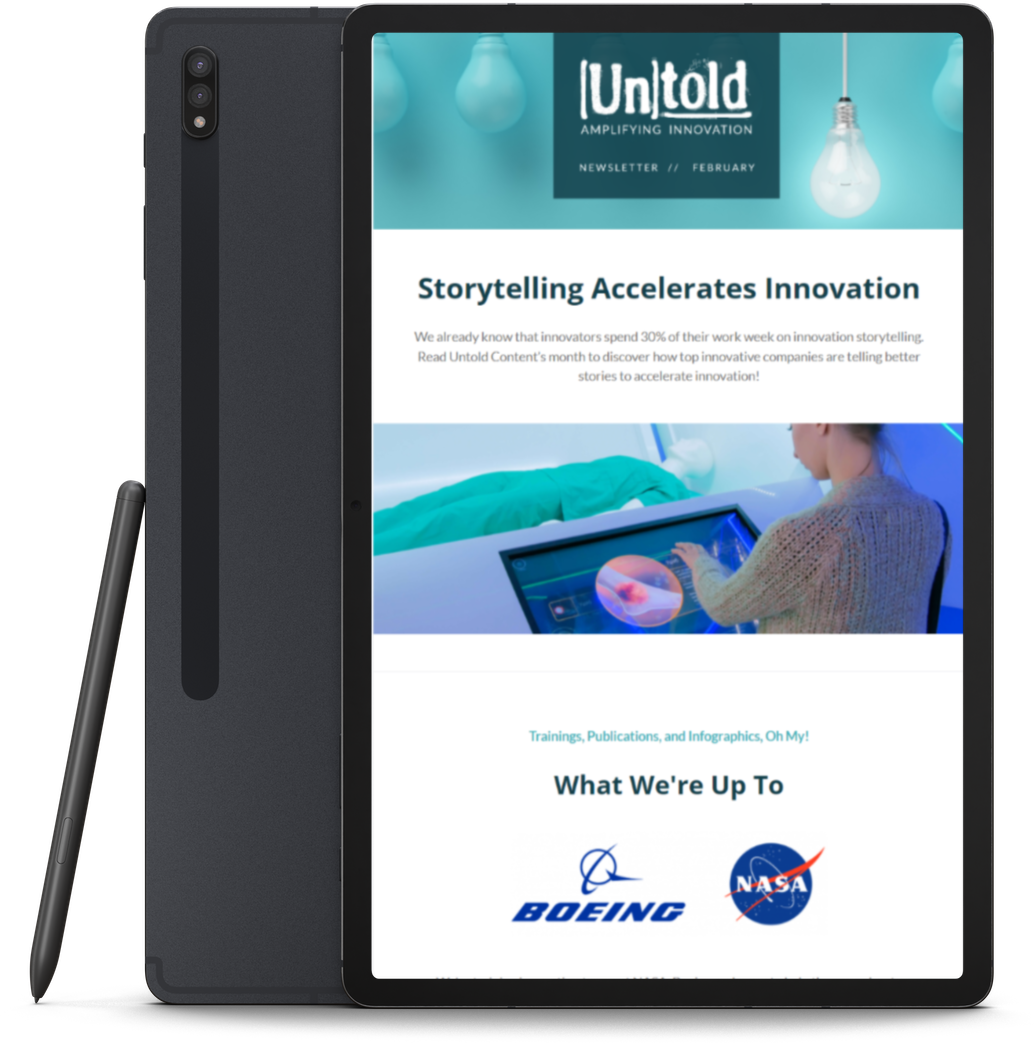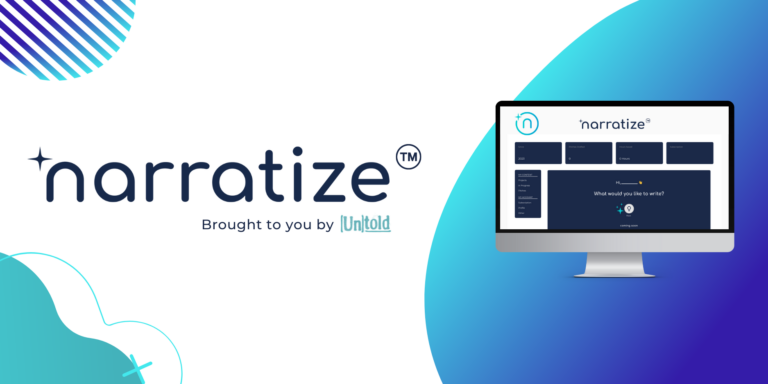Blog >> Nailing Your Message-Market Fit
Nailing Your Message-Market Fit
How do founders and investors rapidly achieve message-market fit? In a sea of content, how do you stand out with validated claims and evidence-based insights?
Recently, our CEO, Katie Trauth Taylor–a serial entrepreneur and corporate innovation storyteller–was invited by Stella Labs to present at the Women’s Venture Summit, an event aimed at boosting female founders’ access to capital and to growing investment in female-led startups. At this annual event, Katie led a workshop titled The Story Journey: Elevating the Conversation Beyond a Press Release. The session, which was comprised of founder and investor attendees, aimed to provide strategies to help founders identify their message-market fit and design a strong content strategy.
In this blog, we recap the insights Katie shared at that exclusive event. Read on to learn how nailing your message-market fit and building a strong content strategy will drive differentiated claims to your company or portfolio.
Our Innovation Storytelling Training teaches critical storytelling formulas like the ones shared here, and our Innovation Storytelling Toolkit provides 30+ tools, templates, and epic examples. By practicing innovation storytelling, you’ll master how to craft narratives that bring your hard work to life.
To identify your message-market fit, get into the mind of your user.
At Untold, we preach the power of audience-driven stories. So let’s kick off with an exercise.
Take a moment to dwell in the mindset of your customer—your user. Of course, as a founder, you may have multiple audiences you need to inform, convince, and convert as part of your business model. Your users may be different from your decision-makers, your champions, your gatekeepers, your investors, your diverse user segments.
For this exercise, just choose one. The goal here is to feel one audience’s needs. Reflect on their ways of thinking, their concerns, and their sense of value.
Now, identify the transformation you want to take place when your user engages with your product or service. Identify the from and the to.
- What’s their current state? Why are they burdened? frustrated? What are they searching online for solutions for? What’s their urgent, expensive problem? Where are they when they feel that problem the most? What triggers the pain? Paint a picture of your customer in that moment. That’s your from.
- How does your solution transform them? What does success look like for that person? What emotional transformation occurs? What ease do they feel? What’s the ah-ha moment? That’s your to.
Dwelling in the needs of your user will set you up to accurately determine what it is that user needs to hear. Now let’s dig into three big ideas that will help you pin down your message-market fit.
Big Idea #1: Your Messaging Should Leverage Empathy and Value
Your messaging—and your whole business mission and vision for that matter—should always start with the user. What do they feel? What do they need? It’s critical that you keep your messaging hyper-focused on making sure your user feels known, and that all starts with empathy.
Take, for example, the story of Color Genomics. While out to dinner with Chip Bergh, the CEO of Levi Strauss, the CEO of Color Genomics, Othman Laraki, shared a touching personal story. His story went like this:
“Unfortunately, I lost my grandmother to breast cancer and my mother survived two bouts of it. After the second diagnosis, she was tested and found out she is a carrier for a genetic mutation in the BRCA2 gene that greatly increases her risk for breast and ovarian cancer. I, too, was tested and discovered that I am a carrier of that mutation. These mutations likely resulted in breast cancer in both my mother and grandmother, but they only found out after their diagnosis, whereas knowing early could have prevented them in the first place.”
Levi’s CEO felt so moved by the story, that he made the decision then and there that Levi’s would offer Color Genomics’ genetic testing to its employees. This is a powerful example where empathy-driven storytelling opened the door. Conversations involving data, claims, and validation all came next, of course, but it all started with empathy. Chip felt deeply connected. He experienced narrative transport.
It’s important to note, however, that although empathy is powerful, empathy alone is not enough. It’s also key that you demonstrate value. If users are moved but can’t justify the purchase, you’ll lose them. Therefore, it’s critical that your messaging clearly communicates the value users will experience.
At Untold, we have clients define their Content Mission Statement to ensure that their content captures that value proposition. Here’s our general template:
Content Mission Statement Template: Our [insert company, product, service, or platform] provides [insert target audience] with [insert what you deliver] to [insert results readers get from your content].
For example: Untold Content’s Innovation Storytelling Training provides innovation teams with story-building tools, templates, and epic examples that empower them to create impactful stories that generate buy-in, increase motivation, and speed-up the innovation process.
Big Idea #2: Amplify 1-3 data points that crisply, clearly communicate value. And make sure those claims are true.
The next step in nailing your message–market fit is to determine what evidence your audience needs in order to convince them that those value propositions are true.
One approach we take at Untold is to understand a story’s impact-evidence quotient, which is a conceptual term that describes the amount of information or data needed to create the desired impact. Too little or too much data can result in a loss of credibility or disengagement with you, your problem, and your solution.
Get back into the mind of your user, then ask yourself: Are my data stories clear? Do they contain the right data to establish credibility and impact? Do they create a clear picture of the future?
If you don’t yet have the data to validate your value claims, ask yourself these questions: What results or claims do we wish we could make? What data can we start tracking now to get to that claim?
Big Idea #3: 10X your messaging
Not all messaging will work for every market segment. Where content really is king is when you’ve figured how to storytell your claims in multiple ways or in a variety of content types. It may take some trial and error to figure out what resonates.
Our suggestion at Untold is to build 3-4 messaging pillars that align with your market segments or audiences.
- If you’re doing B2B or enterprise sales, you can hold message-market feedback sessions designed as focus groups. For instance, 3-4 focus groups with 6-8 people is a great place to start so that you’re gathering feedback and validation for your messaging before scaling it up.
- If you’re doing product-led growth, direct-to-consumer, or generally B2C, there are great automation tools inside tools like MailChimp or Hubspot, where you can A/B test messaging and track analytics to find out what’s working best.
The Untold Content Recipe for Nailing Message-Market Fit
So, get into the mind of your user; leverage empathy; highlight the key value propositions; prove those claims with a few select pieces of evidence; and then test it out! Our Innovation Storytelling experts at Untold Content have been using these strategies for more than a decade to help organizations find their message–market fit. You can use these learnings yourself to ensure that even in a sea of content, you stand out with validated claims and evidence-based insights.

Sign up for our Newsletter for more Innovation Storytelling tips delivered to your inbox!
Need help crafting the narrative of your innovation pitch? Our Innovation Storytelling Training empowers learners to pitch with impact in an immersive, interactive story-driven experience.
Ready to practice building innovation stories? Get our Innovation Storytelling Toolkit for lifetime access to dozens of tools, templates, and epic examples.
Looking to share your startup’s story with potential partners, investors, consumers, and team members? Check out our Startup Content Toolkit.




